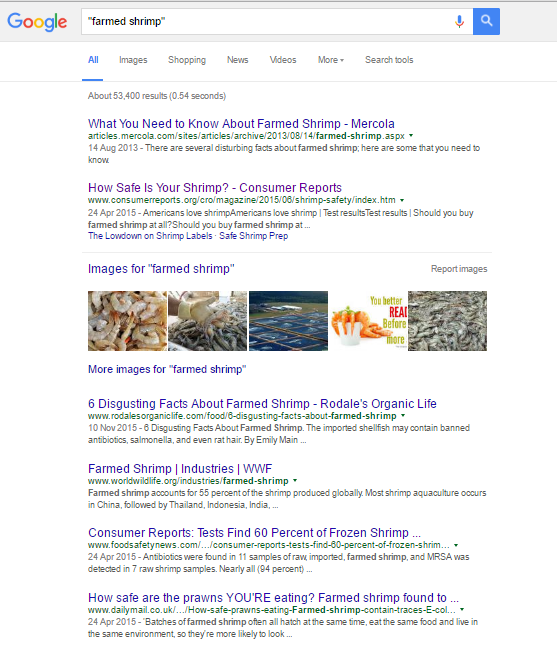Sponsored by the Seafood Importers’ and Processors’ Alliance, we have recently conducted a risk assessment of shrimp products available to consumers in the EU using the EU’s database of imported consignments which have failed regulations, the Rapid Alert System for Food and Feeds (RASFF). The RASFF database gives details on the place of origin, species and violation for all imported food and feed products. We used the contamination data from 1997 to 2015 to calculate an Allowable Daily Intake (ADI) of shrimp products. We characterised all of the violations by contamination type (antimicrobial, heavy metal, bacteria, spoilage, persistent organic pollutants, excess additives) or inadequate documentation (traceability) and whether they were farmed or wild caught where possible. We collected mainstream media articles within the same timeline on shrimp and translations of in English, French, Spanish and German across European media using the Nexis® database and characterised them according to articles about health, traceability, economics, social aspects or environmental impact.
From the risk assessment of contamination data, we found that there are consignments that could pose genuine risk to consumers if they had not been with-held. However, there is no way of knowing how much of shrimp imports this represents or if this is at all representative of what is available to consumers. The number of alerts has reduced significantly however, while imports have increased so that now there are around 5 alerts (failed consignments) per 100,000 tonnes of imported shrimp. This has matched the evolution of the RASFF system and EU food law as testing and the process of communicating risk to member states hav become more efficient. We found that that wild shrimp also posed a health risk in some circumstances in the past, particularly due to excessive additives.
We found that the number of mainstream media articles concerning health and traceability, closely matched the number of alerts over the years with peaks in 2002, showing that in this respect the media was well balanced. However, almost all health related articles were about farmed shrimp and negative. After an internet search on “farmed shrimp”, we found that the first 50 sights were predominantly negative but without much scientific basis. They repeated an established narrative of negativity and often sighted the same sources, producing a negative echo chamber that narrowed the discourse rather than providing new information that could empower consumers.
The full findings will be published in a forthcoming article.
